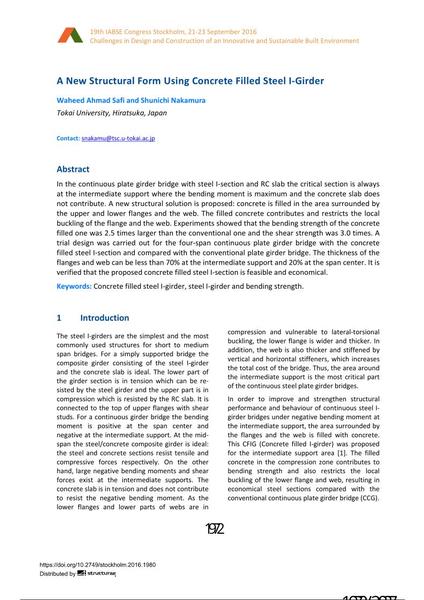A New Structural Form Using Concrete Filled Steel I-Girder

|
|
|||||||||||
Détails bibliographiques
| Auteur(s): |
Waheed Ahmad Safi
(Tokai University, Hiratsuka, Japan)
Shunichi Nakamura (Tokai University, Hiratsuka, Japan) |
||||
|---|---|---|---|---|---|
| Médium: | papier de conférence | ||||
| Langue(s): | anglais | ||||
| Conférence: | IABSE Congress: Challenges in Design and Construction of an Innovative and Sustainable Built Environment, Stockholm, Sweden, 21-23 September 2016 | ||||
| Publié dans: | IABSE Congress Stockholm, 2016 | ||||
|
|||||
| Page(s): | 1972-1979 | ||||
| Nombre total de pages (du PDF): | 8 | ||||
| Année: | 2016 | ||||
| DOI: | 10.2749/stockholm.2016.1980 | ||||
| Abstrait: |
In the continuous plate girder bridge with steel I-section and RC slab the critical section is always at the intermediate support where the bending moment is maximum and the concrete slab does not contribute. A new structural solution is proposed: concrete is filled in the area surrounded by the upper and lower flanges and the web. The filled concrete contributes and restricts the local buckling of the flange and the web. Experiments showed that the bending strength of the concrete filled one was 2.5 times larger than the conventional one and the shear strength was 3.0 times. A trial design was carried out for the four-span continuous plate girder bridge with the concrete filled steel I-section and compared with the conventional plate girder bridge. The thickness of the flanges and web can be less than 70% at the intermediate support and 20% at the span center. It is verified that the proposed concrete filled steel I-section is feasible and economical. |
||||

